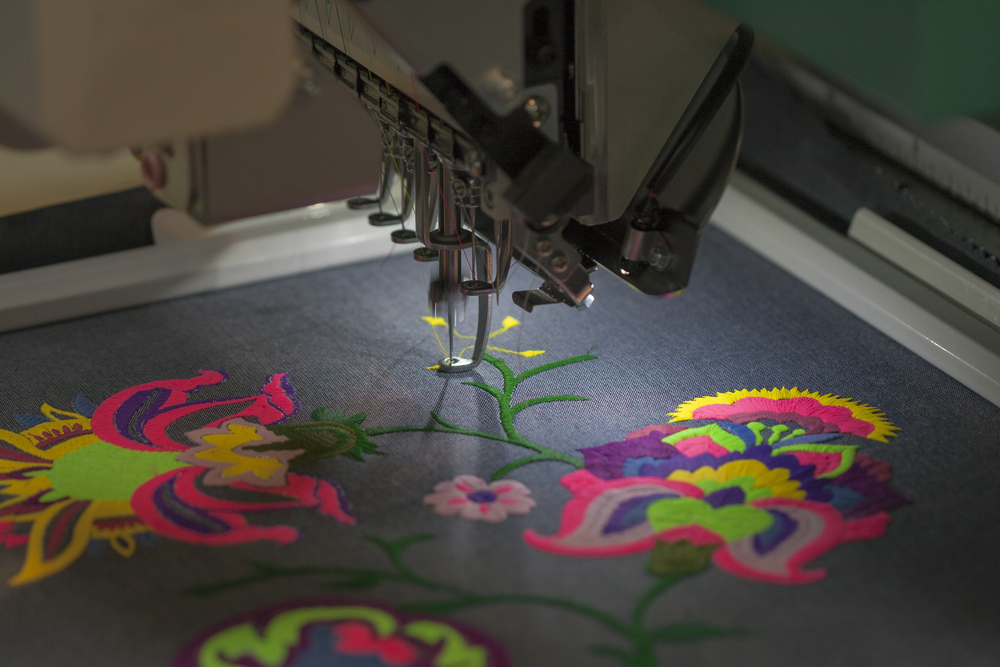Streamlining the Art of Needlework Digitizing: Step-by-Step Overview
Needlework digitizing is a precise craft that demands accuracy and creativity. As innovation remains to advance, the digitization procedure has become extra easily accessible, enabling enthusiasts to bring their intricate designs to life effortlessly. In this guide, we will certainly unravel the intricacies of needlework digitizing, breaking down each action systematically to improve the procedure and equip both newbies and seasoned embroiderers alike. Stay tuned to find how you can simplify this elaborate art form and transform your creative visions into magnificently stitched work of arts.
Understanding Embroidery Digitizing Software
Needlework digitizing software application works as a critical device for changing intricate styles into electronic formats suitable with needlework makers, facilitating accurate stitching and customization. This specialized software program allows customers to import various image documents layouts, such as JPG or PNG, and transform them right into needlework machine-readable formats like DST, EXP, or PES - Digitizing for Embroidery. By utilizing attributes like stitch editing, rug alternatives, and thread color selection, digitizing software program enables users to manage every aspect of the style process
Additionally, progressed embroidery digitizing software program offers devices for creating intricate layouts, readjusting stitch thickness, and integrating complex details. Users can also preview the layout before stitching it out, guaranteeing precision and decreasing errors. Furthermore, many software program programs provide automatic functions that help simplify the digitizing procedure, saving time and initiative.
Recognizing the capabilities of embroidery digitizing software is important for achieving top quality lead to needlework jobs. By grasping this tool, needlework lovers and specialists can release their creative thinking and bring elaborate designs to life with precision and efficiency.

Selecting the Right Style File
After acquainting on your own with the capabilities of embroidery digitizing software program, the following essential action in the process is picking the ideal layout apply for your job. Digitizing for Embroidery. When choosing a design file for embroidery digitizing, it's vital to take into consideration the intricacy of the layout, the dimension of the end product, and the type of material you will certainly be dealing with
For elaborate designs with fine information, a high-resolution image or vector documents is advised to make certain that the needlework device can properly recreate the layout. In addition, the size of the final item plays a substantial function in picking the best design data. Larger layouts may require higher resolution documents to keep clarity and intensity.
Additionally, the sort of material you will certainly be stitching on affects the selection of layout data. Various fabrics may need adjustments in the layout file to ensure that the stitches are properly straightened and the layout looks like planned. By meticulously choosing the ideal style documents based upon these variables, you can set on your own up for a successful needlework digitizing procedure.
Digitizing Devices and Strategies
Using specialized software program and accuracy techniques, digitizing devices are vital in changing elaborate designs right into embroidery-ready files. Needlework digitizing software program, such as Wilcom, Hatch, or Embrilliance, gives the essential platform to transform artwork right into stitch information. These programs supply functions like stitch editing, padding choices, and text devices to guarantee the layout translates perfectly onto material.
One of the key strategies in digitizing is developing a clear path for the embroidery equipment to adhere to. This involves digitizing each component of the layout with precision, establishing stitch types, thickness, and directions. By utilizing tools like digitizing tablets or software-specific plugins, embroiderers can accomplish a high level of accuracy in their digitized styles.
Additionally, grasping the art of rug sewing is crucial for generating high quality embroidery. Underlay sewing stabilizes the textile and creates a structure for the style, guaranteeing that the final item is both visually attractive and durable. By recognizing these digitizing devices and strategies, embroiderers can elevate their craft and bring intricate styles to life with accuracy and performance.
Personalizing Stitch Kinds and Instructions
Having actually established a structure in digitizing devices and strategies, a get redirected here critical aspect in advancing needlework craftsmanship hinges on customizing stitch types and directions with precision and function. The choice of stitch types can dramatically affect the general look and texture of the embroidered design. Satin stitches, understood for their smooth and shiny surface, job well for producing borders and text. On the other hand, fill stitches are excellent for covering larger areas successfully. By purposefully incorporating these stitch kinds, embroiderers can accomplish depth and dimension in their layouts.
Moreover, the instructions of stitches plays an important role in improving the aesthetic charm of the last embroidery. By experimenting with various stitch angles and patterns, embroiderers can bring their designs to life with impressive detail and intricacy.
Screening and Refining Your Digitized Design
To guarantee the precision and high quality of your digitized layout, detailed testing and refinement are necessary steps in the needlework digitizing process. When you have actually completed the digitization of your layout, it is important to test it prior to continuing with the real needlework. Testing enables you to recognize any kind of possible concerns such as thread breaks, sew thickness issues, or design distortions that may impact the result.

After screening, it is essential to refine your digitized design based on the feedback from the test sew-out. This might include tweaking sew setups, adjusting thickness, or making adjustments to the overall layout to achieve the wanted result. By repeating with screening and improvement, you can tweak your digitized style to perfection before moving on with the real needlework process.
Conclusion
Finally, mastering the art of needlework digitizing requires an extensive understanding of the software program, selecting the best style data, utilizing digitizing tools and techniques, personalizing stitch types and instructions, and screening and improving the digitized layout. By following these steps, embroiderers can simplify the digitizing procedure and produce high-quality embroidered designs with accuracy and performance.